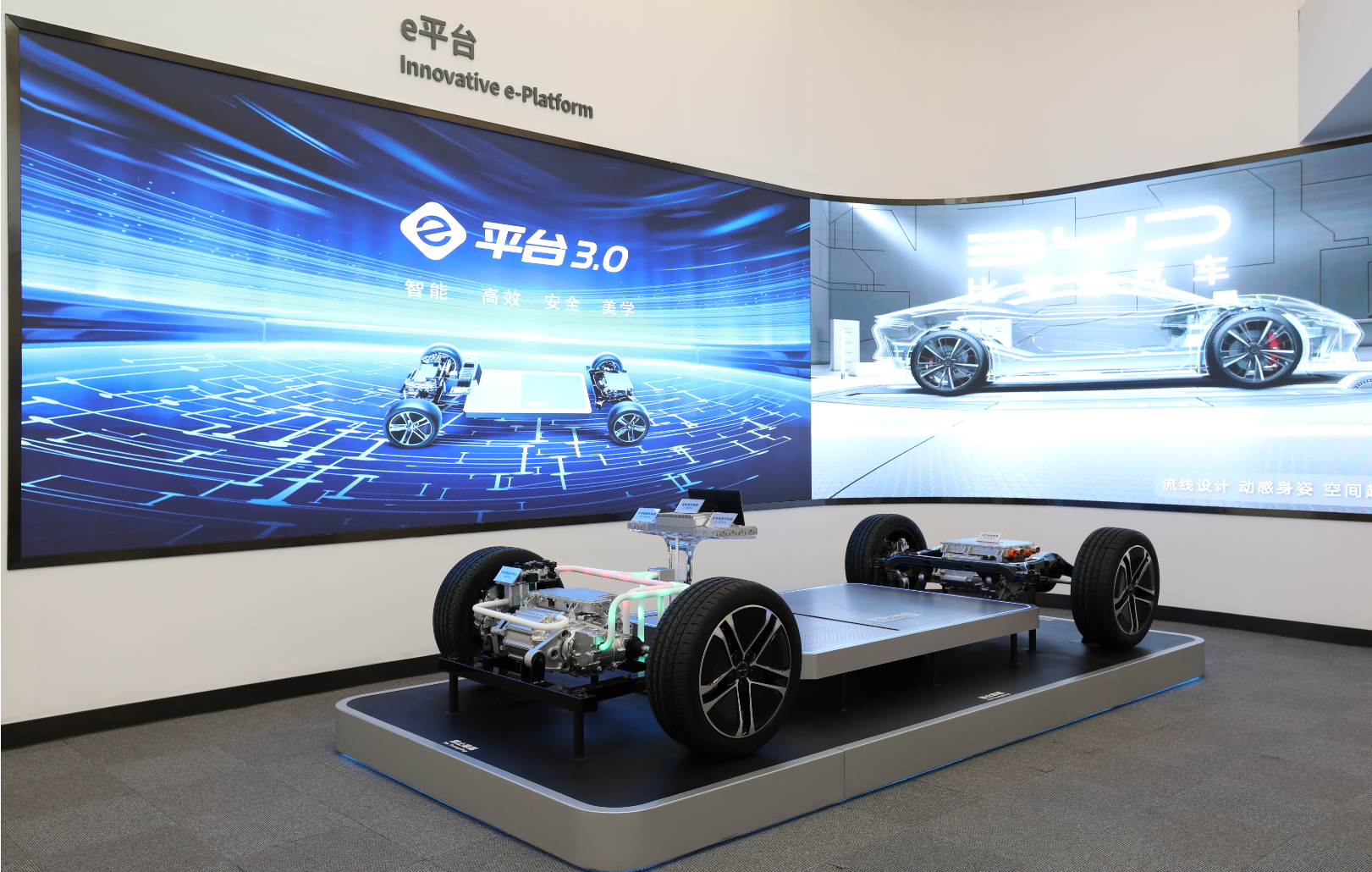Recently, I participated in the technical communication conference of BYD e-platform 3.0. BYD e-platform 3.0 is a pure electric exclusive platform that refreshes the software and hardware architecture including the chassis layer, high-voltage layer, low-voltage layer, and body layer.
1. Performance

In terms of performance, the energy efficiency of charging and discharging will be improved due to the adoption of 800V high-voltage platform and SiC power modules. BYD officials indicated in the communication conference that the 2.9-second 0-100km/h acceleration and 1,000 km of cruising range are not the platform’s limit data but planned data in the future product planning.
As shown in the picture, BYD’s integrated eight-in-one (i.e. motor, electric control, reducer, OBC, DC-DC, PDU, VCU, BMC) electric drive system is compact. Officially, in the on-site communication, it was also mentioned that the new platform supports more advanced suspension systems such as double-wishbone.
Considering that the success of BYD’s previous models, Qin and Tang, also relied on acceleration performance, if the new platform can bring higher performance, it will undoubtedly be welcomed by existing users.
2. Thermal Management

BYD e-platform 3.0’s integrated thermal management technology is a unique thermal management mode that uses air conditioning refrigerant as the medium and heat pump air conditioning compressor as the driving force. The integrated thermal management control module is the core of this system, and can dynamically allocate heat to different components (driver’s cabin, blade battery, electric drive unit) for unified management.
The benefit of this is that the battery pack in winter is easier to warm up, and by increasing the cooling capacity, the cooling performance in summer will also be stronger, theoretically showing outstanding performance in continuous high-load racing environments. Such a thermal management system can only be seen on this new platform currently.
3. SafetyThe stable chemical performance and physical structure of blade batteries allow BYD to rethink the collision safety of electric vehicles. While conventional electric vehicles integrate the battery pack as a contributor to the body stiffness, it is still necessary to protect the battery pack as much as possible to avoid puncture problems.
Blade batteries with stable chemical performance have inherent advantages in thermal runaway. Coupled with their own battery module structure, BYD can also incorporate the blade battery itself into the collision safety design of the vehicle body on the new platform, achieving more reasonable spatial efficiency and lightweighting. At the same time, this design also enables the new platform’s models to achieve body strength and stiffness that were difficult to achieve in the era of traditional fuel vehicles, improving the driving experience.
4. Openness

The e platform 3.0 has reserved an interface for automatic driving hardware that can be connected to different solutions. In terms of intelligent cockpit, the all-new BYD OS provides a basic hardware calling operation platform. At the same time, it also adopts the SOA idea of decoupling software and hardware in the architecture. Third-party developers can also carry out corresponding development work based on the standard interface of the OS.
Summary
Last month, Li Yunfei, general manager of the BYD Public Relations Department, revealed in an interview with the media that BYD will release a new energy high-end brand with a brand new logo in the fourth quarter of this year, with a price range of 500,000 to 8 million yuan. Considering the above-mentioned technical advantages, it is highly possible that this car will be equipped with the e platform 3.0. We will wait and see whether BYD can break through its own image and enter a field that it has never entered before.
🔗Source: BYD
This article is a translation by ChatGPT of a Chinese report from 42HOW. If you have any questions about it, please email bd@42how.com.
